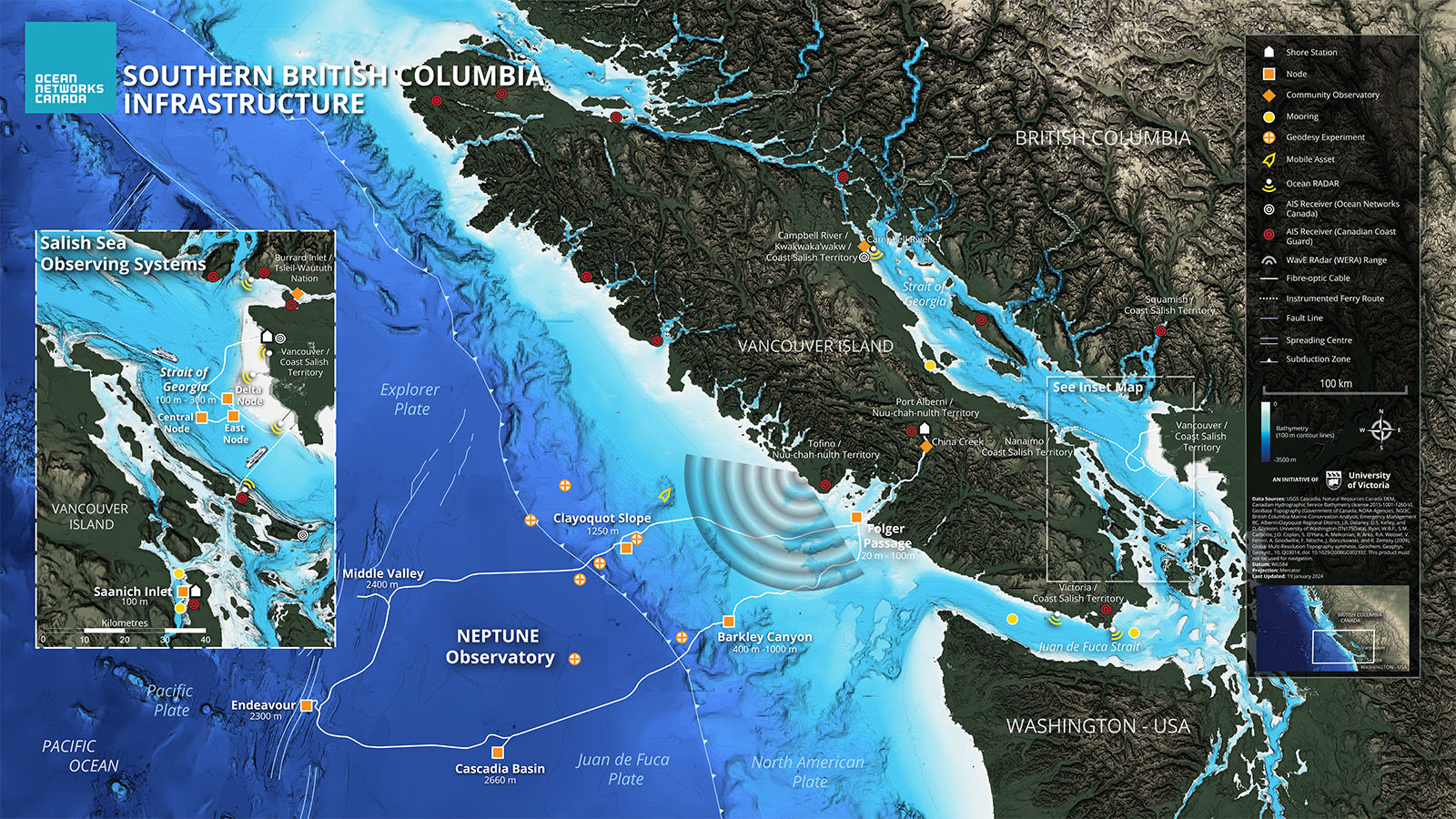The deep sea off the coast of Canada was rocked by hundreds of earthquakes per hour – yep, per hour – at the beginning of March 2024, leading seismologists to believe that a new ocean crust could be forming deep below the waves.
The spike in activity occurred near the Endeavour segment of the Juan de Fuca Ridge, a plate boundary found on the seafloor around 240 kilometers (149 miles) offshore of Vancouver Island.
On March 6, 2024, Ocean Networks Canada picked up on over 200 earthquakes, including one magnitude 4.1 earthquake, around 5 kilometers (3.1 miles) below sea level.
Zoe Krauss, a marine seismology PhD candidate at the University of Washington, said in a statement that this could be a sign of an “impending magmatic rupture” whereby a deepsea magma chamber springs a leak. The searing-hot magma cools rapidly once it hits the cold seawater and solidifies into a new oceanic crust.
“We can use earthquake activity to track the level of built-up stress at the Endeavour segment in real-time using seismic data provided by Ocean Networks Canada. More earthquakes mean more stress build-up,” added Krauss.
This process appears to happen in decades-long rhythms. The researchers have noted an increase in activity at the Endeavour segment since 2018, appearing to fit in with a roughly 20-year cycle of bursts. The last time the region had similarly intense activity was 2005.
The Endeavour site is home to many other features that hint at the strange geological forces deep within Earth, such as the Endeavour Hydrothermal Vents Marine Protected Area. This 97 square kilometer (37 square mile) area is a vast “city” of underwater chimneys that spew clouds of heated water discharges.

Ocean Network Canada’s southern British Columbia ocean observing infrastructure.
Image Credit: Ocean Network Canada
The unique conditions found around the hydrothermal vents support a wealth of fascinating biodiversity, including bizarre forms of extremophile bacteria, as well as more familiar characters like worms, clams, limpets, shrimp, snails, and crabs.
The recent underwater earthquakes have likely toppled some of the towering deepsea chimneys, causing upset for the local ecosystems. Magma breaches from the seafloor also have the potential to completely cake the existing vent structures with a fresh layer of cooled lava, essentially resetting the ecosystem. However, the team doesn’t believe this is a risk for the Endeavour site.
There’s no need for you to fret either. While this is fairly major seismic activity, it’s distant enough from land to not cause any headaches for humans.
”No one should be alarmed about this great swarm of earthquakes. They are far offshore and cause no danger. Rather, the data are exciting to the science community and certainly not menacing,” explained Kate Moran, President and CEO of Ocean Networks Canada.
Source Link: Intense Seismic Shakes Off Canada's Coast May Be Forming New Seafloor